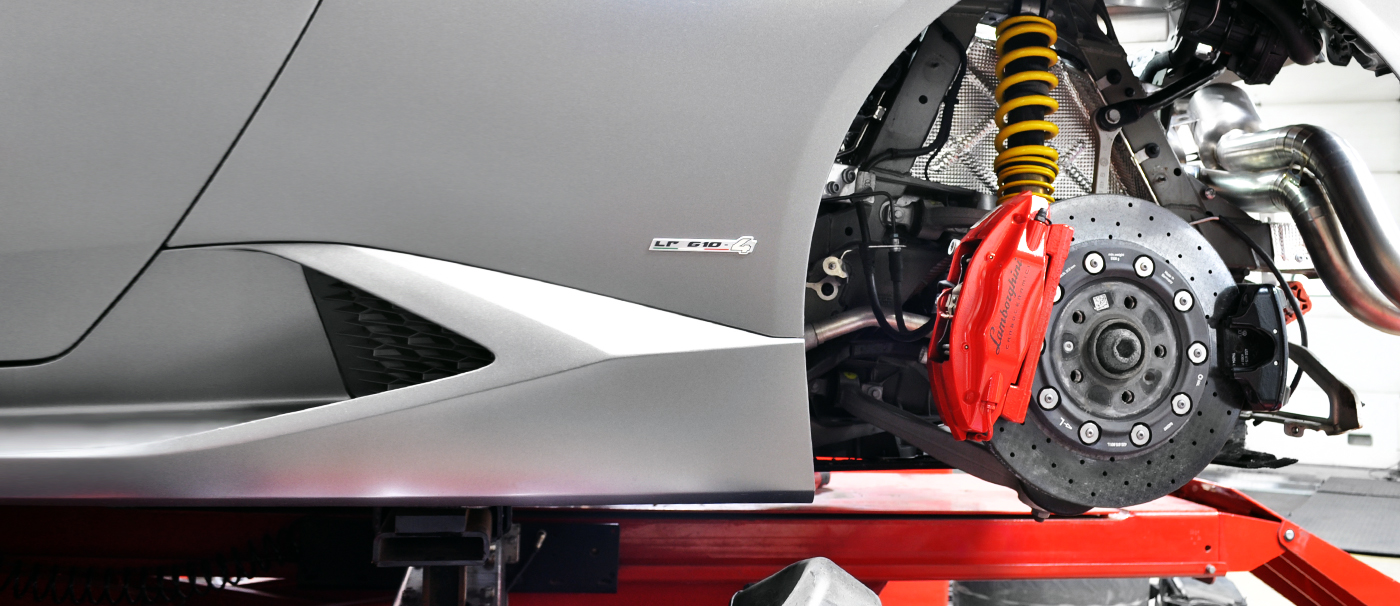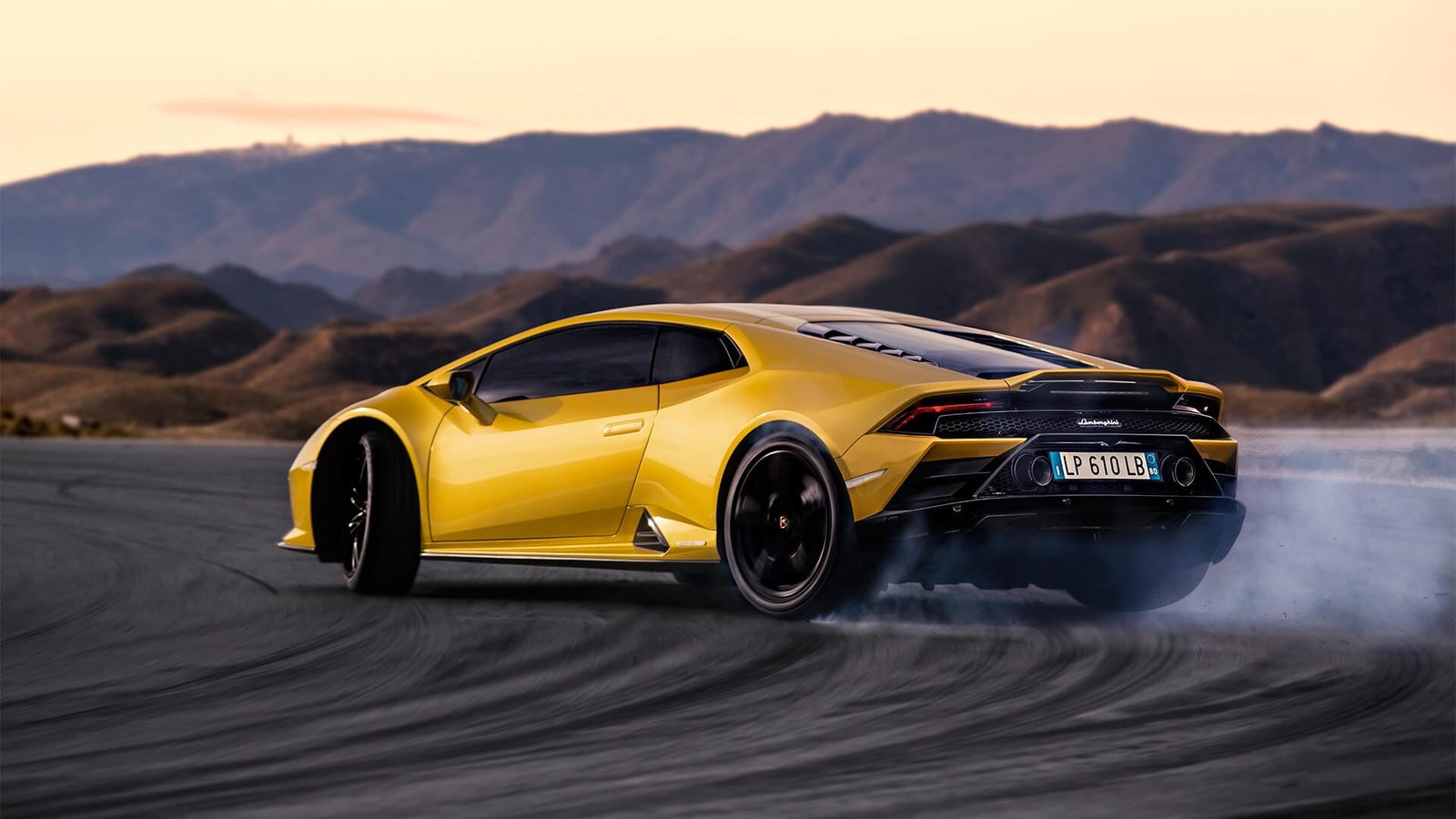1. Introduction
Lamborghini Huracán Carbon Ceramic Brakes Performance: The Lamborghini Huracán is renowned for its blistering speed, sharp handling, and striking design. As a supercar built for both track and road use, its performance capabilities are not limited to acceleration and top speed alone—braking performance is equally critical. This is where carbon ceramic brakes come into play. These advanced braking systems have become the standard in high-performance cars, offering superior stopping power and durability. In this article, we will explore the performance of carbon ceramic brakes in the Lamborghini Huracán, examining how they contribute to the overall driving experience.
2. What Are Carbon Ceramic Brakes?

Carbon ceramic brakes, as the name suggests, are made from carbon fiber and ceramic compounds. These brakes are designed to withstand extreme heat and stress, which is essential for supercars like the Huracán that regularly push the boundaries of speed and power. Compared to traditional steel brakes, carbon ceramic brakes are lighter, offer better heat dissipation, and have a higher resistance to brake fade, especially under continuous heavy braking, making them ideal for high-performance vehicles.
In addition to their durability and performance, carbon ceramic brakes are corrosion-resistant and tend to last longer than conventional steel brakes, albeit at a higher cost.
3. Design and Engineering of Lamborghini Huracán Carbon Ceramic Brakes
The Lamborghini Huracán’s braking system is built with precision, featuring large carbon ceramic discs paired with multi-piston calipers. These brakes are specifically engineered to handle the immense power produced by the Huracán’s V10 engine. The discs themselves are made from a composite material that combines carbon fiber with silicon carbide, resulting in a brake rotor that can withstand extremely high temperatures without warping or losing effectiveness.
Each disc is clamped by lightweight aluminum calipers, typically equipped with six pistons at the front and four pistons at the rear. This allows for even pressure distribution across the brake pads, ensuring smooth, controlled braking even under extreme conditions. The lightweight nature of the entire braking system also contributes to the overall agility and performance of the car by reducing unsprung mass.
4. Performance Benefits of Carbon Ceramic Brakes
.jpg?t=167989249016)
When it comes to real-world performance, carbon ceramic brakes offer several key advantages. One of the most significant is their ability to provide tremendous stopping power, even from high speeds. In a supercar like the Huracán, which can accelerate from 0 to 100 km/h in under three seconds, stopping is just as critical as going fast. Carbon ceramic brakes allow the Huracán to decelerate rapidly and consistently.
Another important benefit is their resistance to brake fade, which occurs when brakes overheat and lose efficiency. On a racetrack, where the brakes are constantly subjected to extreme heat due to high-speed driving and sharp cornering, carbon ceramic brakes maintain their performance even after repeated heavy use.
Additionally, carbon ceramic brakes are much lighter than traditional steel brakes. This reduction in weight improves the car’s overall handling and responsiveness, particularly when navigating sharp turns or accelerating out of corners.
5. Real-World Performance and Testing
In terms of performance metrics, carbon ceramic brakes have proven themselves time and again on both the road and the track. During testing, the Lamborghini Huracán equipped with carbon ceramic brakes has shown remarkable stopping distances. For example, the car can decelerate from 100 km/h to a complete stop in as little as 31 meters, a testament to the brake’s ability to deliver precise, powerful stopping force.
At higher speeds, such as 200 km/h, the braking distance remains impressively short, thanks to the heat-resistant properties of the carbon ceramic materials. Track tests have also shown that the brakes are capable of handling multiple laps without any noticeable loss in stopping power, further proving their ability to perform under the most demanding conditions.
6. Durability and Maintenance

One of the key selling points of carbon ceramic brakes is their durability. Under normal driving conditions, these brakes can last much longer than conventional steel brakes—sometimes as much as four to five times longer. However, they do require specific maintenance procedures, and replacing carbon ceramic brake components can be significantly more expensive than traditional options.
Despite their high durability, these brakes are not immune to wear, especially when used aggressively on the track. That said, their ability to resist corrosion and maintain performance over time makes them a valuable investment for those who demand the best from their supercars.
In terms of versatility, carbon ceramic brakes perform admirably in a variety of conditions, including wet and cold environments. However, they tend to be most effective when they are warm, which is why their true potential is often realized during high-performance driving.
7. Comparing to Traditional Steel Brakes
When compared to traditional steel brakes, carbon ceramic brakes in the Lamborghini Huracán offer distinct advantages in performance. Steel brakes are often more affordable and work well in everyday driving situations, but they can suffer from brake fade during high-performance driving and tend to wear out more quickly.
On the other hand, carbon ceramic brakes maintain their performance under extreme conditions, providing superior stopping power, especially at high speeds. The reduction in unsprung weight also enhances the Huracán’s handling and overall driving dynamics, giving the driver greater control and confidence, particularly on the track.
While carbon ceramic brakes are undoubtedly more expensive to replace and maintain, the added performance benefits they offer make them a worthy investment for serious drivers.
8. Conclusion
The carbon ceramic brakes in the Lamborghini Huracán play a crucial role in elevating the car’s overall performance. Their ability to provide exceptional stopping power, resist brake fade, and maintain durability over time makes them an indispensable component of this high-performance supercar. While they come with a higher cost, both in terms of initial price and maintenance, their advantages far outweigh the downsides for drivers who regularly push the Huracán to its limits.
In conclusion, carbon ceramic brakes are not just a luxury—they are a necessity for those who want to experience the full potential of the Lamborghini Huracán, whether on the open road or the racetrack.
FAQs:
- What are carbon ceramic brakes?
- Carbon ceramic brakes are high-performance braking systems made from carbon fiber and ceramic materials. They offer superior heat resistance, stopping power, and longevity compared to traditional steel brakes.
- How do carbon ceramic brakes improve the performance of the Lamborghini Huracán?
- Carbon ceramic brakes enhance the Huracán’s performance by providing powerful and consistent braking, reducing brake fade, and lowering the car’s overall weight, improving handling and agility.
- How long do carbon ceramic brakes last?
- Carbon ceramic brakes can last significantly longer than steel brakes, often lasting up to 60,000-100,000 kilometers, depending on driving conditions and usage, especially on regular road driving.
- Are carbon ceramic brakes worth the extra cost?
- Yes, for high-performance driving or frequent track use, carbon ceramic brakes are worth the investment due to their durability, resistance to heat, and superior stopping power.
- Can I replace carbon ceramic brakes with traditional steel brakes?
- While it’s technically possible to replace carbon ceramic brakes with steel brakes, it would result in a significant downgrade in performance, especially in high-speed or track conditions.
- Do carbon ceramic brakes perform well in cold weather?
- Carbon ceramic brakes tend to perform best when warm, which may mean slightly reduced effectiveness in cold conditions. However, they are still efficient in everyday use, including wet or cold weather.
- How much do carbon ceramic brake replacements cost?
- Replacement costs for carbon ceramic brakes are higher than for steel brakes, with prices typically ranging from $10,000 to $15,000 for a full replacement, depending on the model and parts.
- Do carbon ceramic brakes require special maintenance?
- Carbon ceramic brakes require less frequent maintenance than steel brakes, but they should be inspected regularly for wear, especially after high-performance driving. Specialized care is needed for replacements due to their cost and materials.
- Why are carbon ceramic brakes lighter than steel brakes?
- The composite material used in carbon ceramic brakes is lighter than steel, reducing unsprung weight, which improves handling, acceleration, and overall vehicle dynamics.
- Can I use carbon ceramic brakes for daily driving?
- Yes, carbon ceramic brakes are suitable for daily driving, though their benefits are more noticeable during high-performance driving. They also last longer and reduce brake dust compared to steel brakes.
Tips for Maximizing Carbon Ceramic Brakes Performance:
- Warm Up the Brakes Before Pushing Them:
- Carbon ceramic brakes perform best when warm. Before engaging in high-speed driving or track days, apply moderate braking to warm up the discs for optimal stopping power.
- Regular Inspection and Maintenance:
- Even though carbon ceramic brakes are more durable, regular inspections are essential, particularly after heavy use on the track. Look for signs of wear on the pads and discs, and ensure the calipers are functioning correctly.
- Avoid Sudden Temperature Changes:
- Carbon ceramic brakes can be sensitive to sudden cooling after intense use. Try to avoid immediately spraying water on hot brakes, as this could lead to cracking or damage.
- Be Aware of Brake Noise:
- Carbon ceramic brakes might produce some noise during everyday driving, especially when cold. This is normal, but if the noise becomes excessive, have the brakes checked for any issues.
- Track Days:
- On track days, take advantage of carbon ceramic brakes’ fade resistance. However, after several laps, allow the brakes to cool down during slower driving to extend their lifespan.
- Be Mindful of Wear in Aggressive Driving:
- If you frequently push your Huracán to the limit, whether on the road or track, be prepared for more rapid brake pad wear. Keep a closer eye on pad thickness and replace them as needed.
- Driving in Wet Conditions:
- Carbon ceramic brakes perform well in the wet, but braking distances may be slightly longer than on dry roads. Apply brake pressure earlier to accommodate for any difference.
- Brake Responsibly on the Road:
- For daily driving, you don’t need to push carbon ceramic brakes to their limit. Use them efficiently without excessive force to prolong their lifespan and avoid unnecessary wear.
- Plan for Replacement Costs:
- Although carbon ceramic brakes last longer, their replacement can be costly. Budget for these expenses if you plan to keep your Huracán long-term, especially after several track days.
- Brake Gently After High-Speed Runs:
- After hard, high-speed braking (especially from 200 km/h or more), drive gently to allow the brakes to cool down naturally without causing thermal shock. This helps maintain their integrity and prolongs life.
